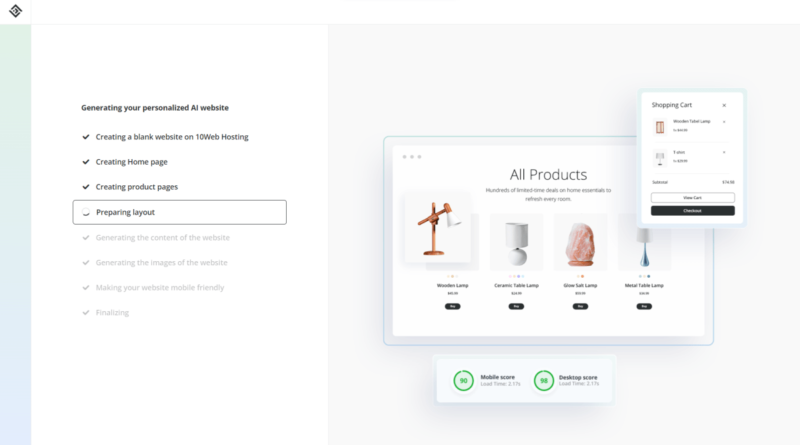Armenia's 10web brings AI website-building to WordPress | TechCrunch
[ad_1]
Generative AI has done an impressive job in improving productivity in a wide range of areas, including website building. There’s no lack of tools that now allow one to generate web designs by simply describing what they want in prompts, including established player Wix and bootstrapped startups like Relume. 10web, a company based out of Armenia, is entering the race and believes it has an edge.
10web allows users to quickly generate websites built with WordPress, the widely-used content management system that is notoriously hard to use for beginners, using text prompts. Unlike Wix and Squarespace, WordPress is open-source, meaning many features don’t come out of the box and require more advanced web design skills; it doesn’t come with hosting services either, so users have to manage more backend tasks.
WordPress still powers around 40% of all the websites on the internet, thanks to its customization options, according to estimates by w3techs. Shopify followed in second place amid a boom of direct-to-consumer ecommerce as vendors look to build their online stores with the help of the Canadian company rather than relying on Amazon.
To make WordPress more intuitive to use, 10web’s Yerevan-based engineering team has integrated generative AI models like Llama 2, GPT-4, and Stable Diffusion into its site-building platform. Such a tool requires a great deal of development effort because “architecturally, building a platform for WordPress is not easy,” said 10web’s co-founder Arto Minasyan, who also runs Krisp, a startup that removes background noise from audio using machine learning.
“You need to have a very good hosting infrastructure. You need to have a managed service to support WordPress security, backups and uptime. All those things are very, very hard because each of the websites is basically an instance,” he added. “In contrast, if you are building on a closed source solution, let’s say Wix or Squarespace, you just build one backend, and then for each website, you just generate some pages.”
Minasyan is confident that focusing on solving WordPress’s usability will pay off eventually because of the sheer size of its open-source community: two million developers. Founded in 2017, 10web currently operates with a positive cash flow. Around 20,000 of its users are paying customers (some SMB customers might have several hundred websites, Minasyan noted). Altogether, 1.5 million sites have been generated with 10web.
10web has two ways to monetize — charging fees per website or by traffic. It has plans to add a payment system, which will allow users to charge their customers and 10web to take a cut of the charge as commission fees.
The company is generating $5 million in annual recurring revenue at the moment and is expected to reach $25 million in ARR by the end of next year, Minasyan said. The founder attributed the company’s growth partly to its favorable location in Armenia. Like other former members of the Soviet Union, Armenia enjoys abundant affordable engineering talent.
“We have AI talent, which is probably four times cheaper in Armenia than in the U.S. And here, we can access the best AI talent possible,” the founder suggested. “But if you are a web builder based in California, you gotta compete with Google, Amazon and OpenAI, so it’s not easy to get the best talent.”
Armenia’s budding tech hub in its capital city has spawned the country’s first unicorn, Picsart, which provides a playbook for fellow startups to follow. Given Armenia’s relatively small economy, its entrepreneurs have historically ventured overseas, particularly targeting the U.S. They employ engineers in Armenia to take advantage of the tech talent at home while hiring marketing and business development headcounts in the U.S., a strategy also shared by 10web’s 70-person strong staff. And of course, having a footprint in the U.S. can be advantageous to fundraising.
“99% of Armenian startups target the U.S. market,” said the founder. “If you want to raise less than $1 million, you can raise from Armenian VCs, but if you want to raise a couple million for seed or tens of millions for Series A, you need to go to the U.S.”
[ad_2]




